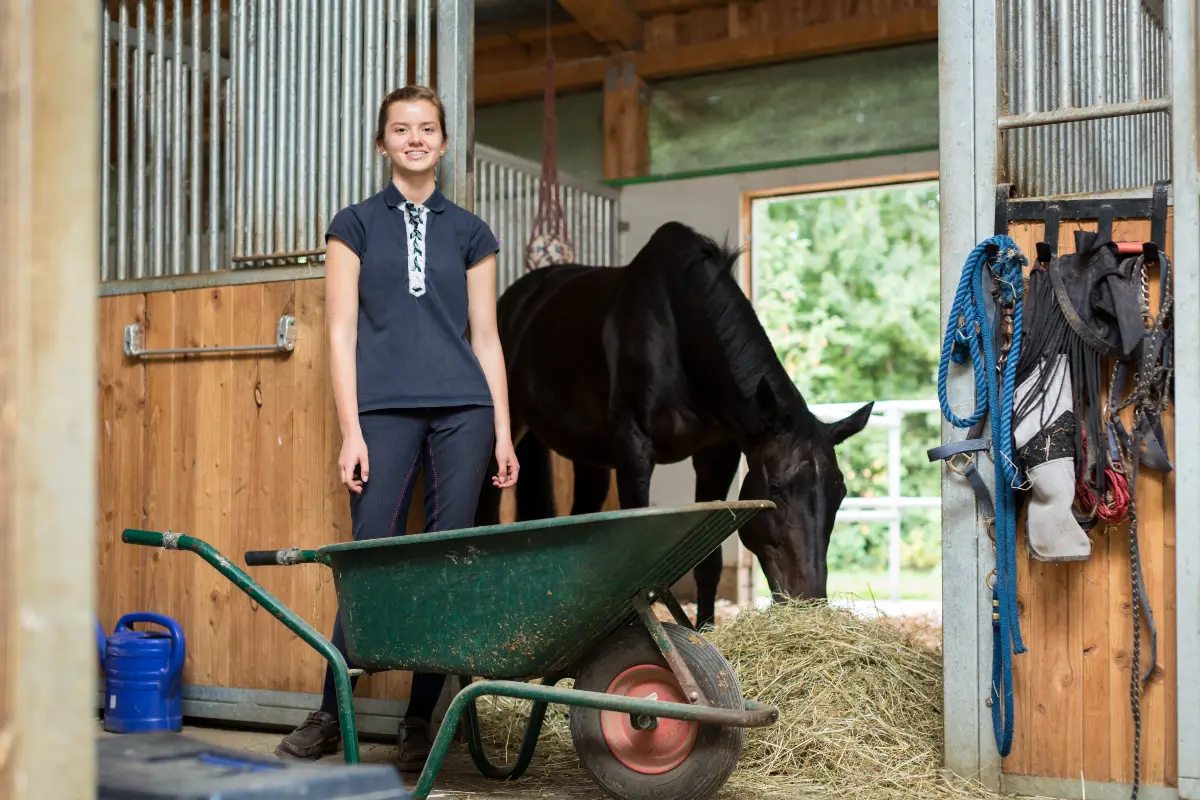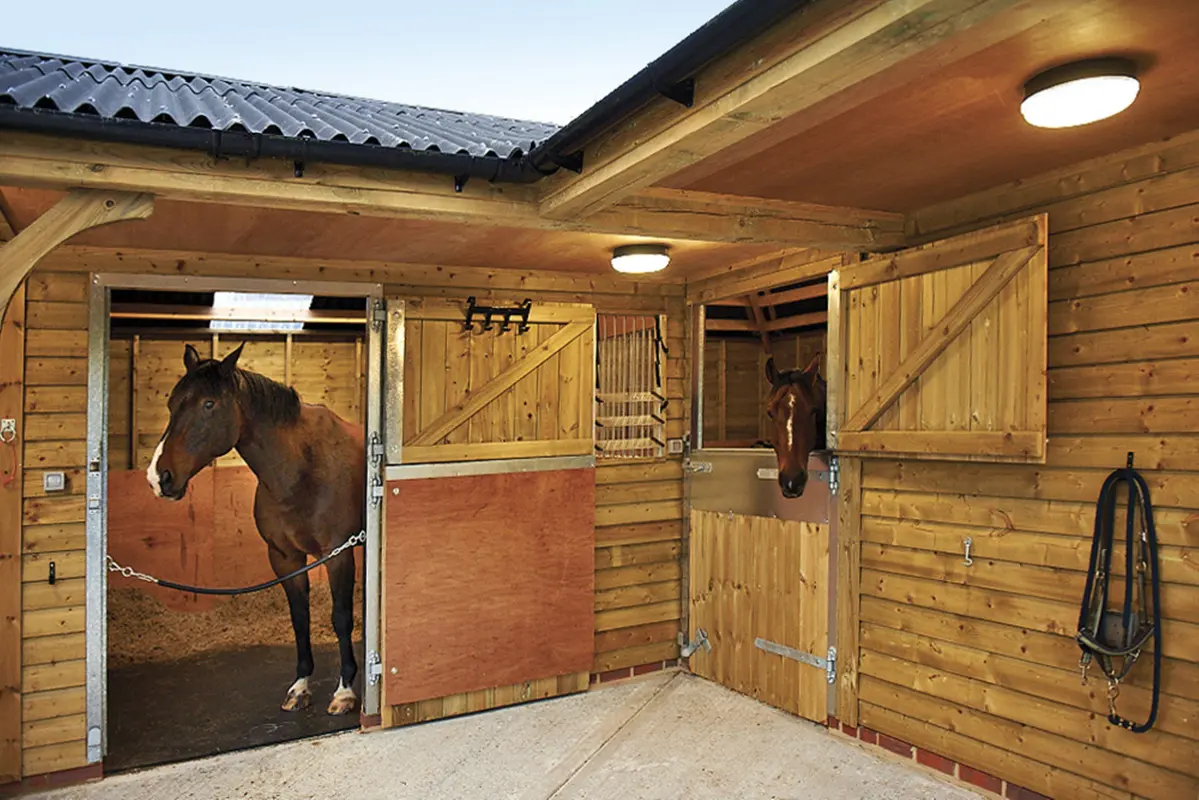
In part 1 of our guide to designing a professional horse yard, we discussed choosing the right site and designing stables for a safe, efficient, and well-run equine business.
In part 2, we look at how to design riding arenas, the best surfaces for a horse yard, and options for pen and fencing.
Riding arenas are often rectangular, although you can also build oval gallop arenas.
The short answer is as big as your land and budget allow. Riding arenas usually start at 65.6ft by 131.2ft (20m x 40m), which is big enough to train most skills.
However, a standard competition dressage arena is 65.6ft by 170ft (20m x 60m). So if you want to practice a dressage test, you should pick this size.
Competition show jumping requires an even bigger riding arena. Competitions are held on a 98.4ft by 170ft (30m x 60m) arena. You should invest in a bigger training yard if you train horses for show jumping.
Of course, the size of your riding arena will be the biggest factor in determining its position on your horse yard. Avoid placing it next to paddocks, so horses grazing and relaxing do not get excited and start galloping about. It would be best if the arena were sheltered from strong, cold winds and the midday summer sun.
You likely cannot tick all these boxes, but consider each point when designing your horse yard.
Choose different surfaces for the areas of your horse yard.
Our sister company, Chart Arenas, offers a range of surfaces depending upon your budget and requirements.
Our sister company, Chart Arenas, specialises in all-weather surfaces and recommends crushed limestone as an affordable and practical solution but emphasises the importance of the base, such as a good foundation of washed/clean aggregate to ensure effective drainage.
Our sister company, Chart Arenas undertakes groundworks for stables and recommends laying a concrete base and rubber matting to provide a durable but comfortable surface.
Our sister company, Chart Arenas, recommends using textured concrete as it is non-slip, durable, and easy to clean.

Consider adding lunge pens to your training yard design. These circular, enclosed areas provide a safe, controlled space with no distractions.
You can use a lunge pen for:
Lunge pens are typically 49.2ft (15m) to 65.6ft (20m) wide and feature a sand, sand and fibre mix, rubber crumb, or wood chip surface.
Position lunge pens near the riding arena, away from the stables, paddocks, and potential distractions.
Another great way to exercise, fitten or rehabilitate horses, or as an alternative to turning out particularly valuable or injury-prone horses, is to use a horse walker. This mechanical device allows your horses to stretch and exercise in a safe, controlled environment and prevent injuries.
Horse walkers can accommodate multiple horses:
Erect a horse walker near the stables and away from the paddocks, arena, and other potential distractions.
Add all-weather turnout pens to your plan to optimise pasture and paddock management and prevent poaching. These small, enclosed paddocks with a well-draining surface allow horses to move freely and exercise year-round.
Individual turnout pens are usually between 33 and 39ft (10-15m) in diameter and can be built to the rear of stalls. However, larger turnout areas can be as wide as 100ft (over 30m).
Turnout pens should be located near the stables in a sheltered and well-draining area.
Popular fencing options for horse yards and paddocks include:
Choose your fence based on the expected level of use and impact. Wooden post and rail fencing is the strongest and most durable. It is also very safe as it is highly visible.
Our sister company Chart Fencing can build, deliver, and install any fencing type.
Our sister company, Chart Arenas, develops custom equestrian arenas from the ground up - from the planning application to the fencing stages. They offer arena and sand school installations, refurbishment and resurfacing, hard standing and access track construction, fencing, stable and horse walker base laying, as well as lunge pen and all-weather turnout installations.
They can build arenas of any size and shape for any equestrian discipline, such as dressage and show jumping, whether it’s a small sand school for practising at home or a large arena at a professional yard or competition venue.








